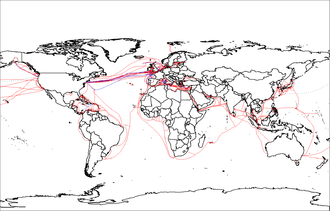Internet GIS
[4][5] One of the most common applications of a distributed GIS system, accessing remotely saved data, can be done through the internet without the need for the Web.
[16] The use of VPN for these purposes surged during the COVID-19 pandemic, when employers needed to allow employees using GIS access to sensitive spatial data from home.
These computers were networked together to share data and processing power and create redundant communications for defense applications.
[10][28] In 1995 The US federal government made the TIGER Mapping Service available to the public, facilitating desktop and Web GIS by hosting US boundary data.
[10] This data availability, facilitated through the internet, silently revolutionized cartography by providing the world with authoritative boundary files, for free.
[31] As time progresses, internet-based applications that do not make use of HTML or Web Browsers have begun to become to grow in popularity.
[32] The World Wide Web is an information system that uses the internet to host, share, and distribute documents, images, and other data.
Internet GIS has brought map-making tools to the general public, facilitating the rapidly disseminating these maps.
[35] While this is potentially positive, it also means that people without cartographic training can easily make and disseminate misleading maps to a wide audience.
[38] Further, malicious actors can quickly spread intentionally misleading spatial information while hiding the source.
[34] As the internet is decentralized, traditional solutions to problems such as government regulation are difficult or impossible to implement.


